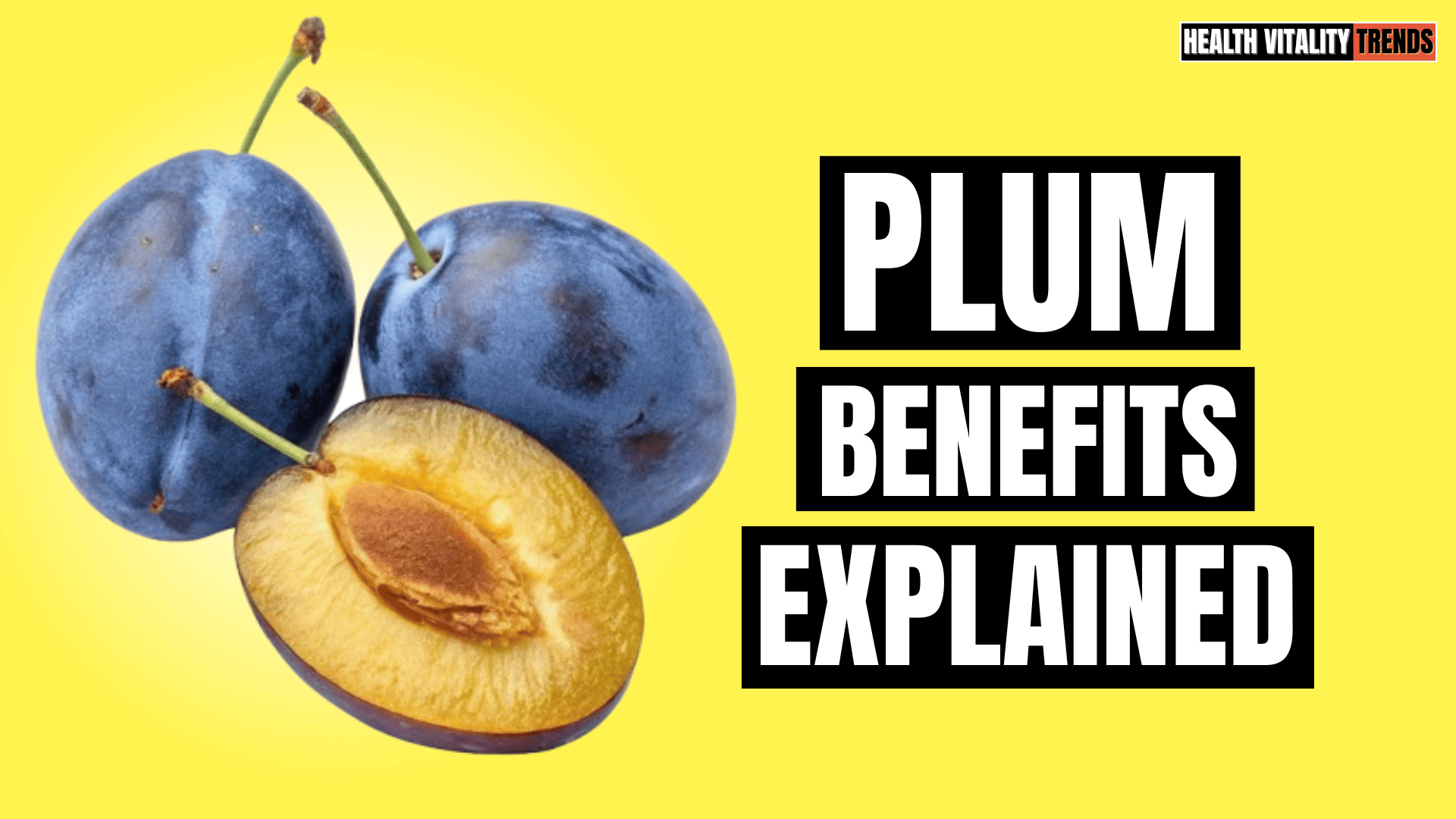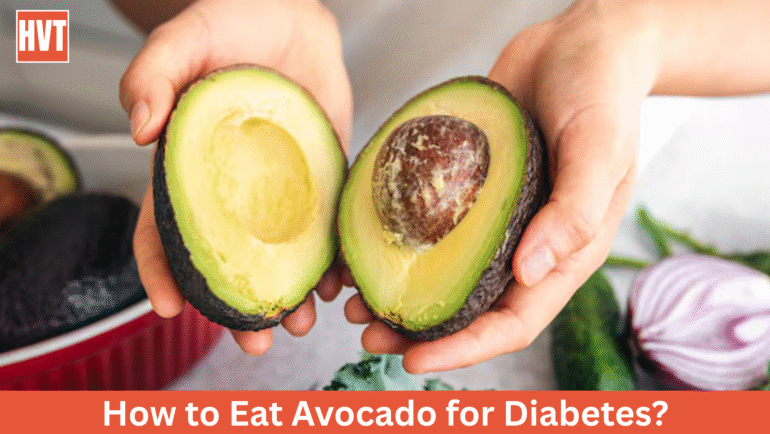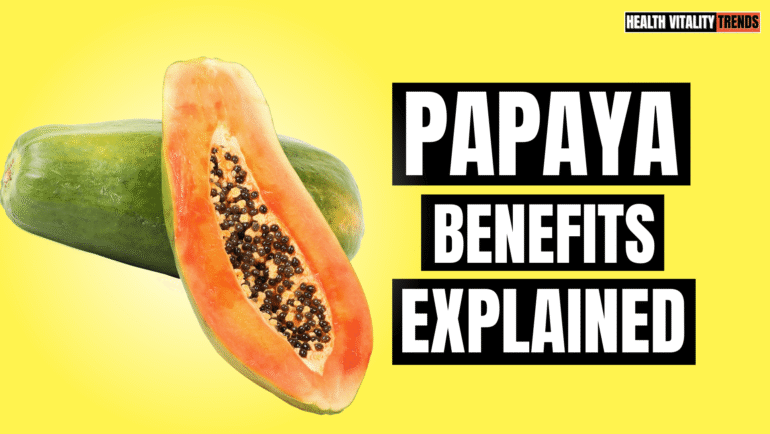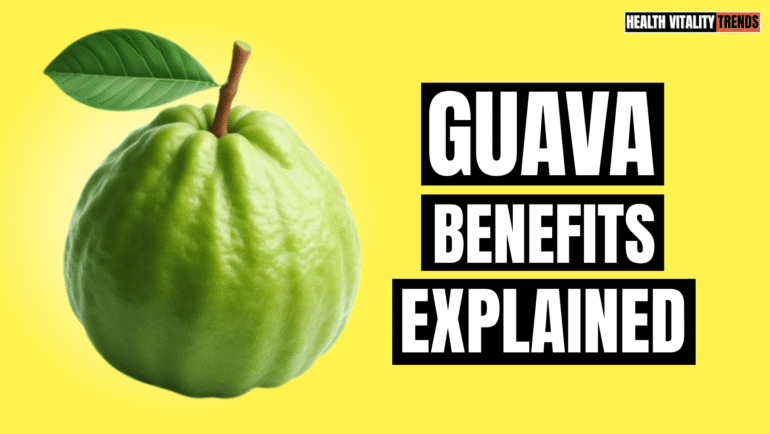
PLUM: Healthy Blood Glucose & Gut-Friendly Polyphenols
Plums are small, juicy, and incredibly nutrient-dense fruits that bring both flavor and health to your diet. Known for their natural sweetness and vibrant colors, plums are rich in antioxidants, vitamins, and fiber.
Whether eaten fresh, dried as prunes, or cooked into jams, plums offer multiple health benefits — from aiding digestion to supporting heart health.
Let’s dive into what makes this fruit unique, its nutrition profile, and how you can best enjoy it.
What is Plum?
The Plum (Prunus domestica)[1] belongs to the same family as cherries, apricots, and peaches. It is one of the earliest domesticated fruits, with origins traced back over 2,000 years to regions in Europe and Asia.
Today, plums are cultivated worldwide, with peak season typically in late spring through early autumn. A fascinating cultural fact: In Japan, plums (ume) are often pickled into umeboshi, a tangy, salty delicacy believed to aid digestion and combat fatigue.
In Chinese culture, the plum blossom is even more significant — it symbolizes resilience and renewal, often appearing in art and poetry.

What Does Plum Taste Like?
Plums have a flavor that ranges from sweet to tart, depending on the variety and ripeness. A ripe plum is juicy, slightly tangy, and refreshing, with a texture that’s softer than an apple but firmer than a peach.
The skin often has a sharper, tart bite, while the flesh is sweet and succulent. Imagine a mix between a grape and a peach — that’s the delicious complexity of a plum.
Plum Nutrition Facts
Here’s the nutritional breakdown for 1 medium plum (66g) from USDA[2] data:
| Nutrient | Amount per Plum (66g) |
|---|---|
| Calories | 30 kcal |
| Carbohydrates | 8 g |
| Dietary Fiber | 1 g |
| Protein | 0.5 g |
| Fat | 0.2 g |
| Vitamin C | 6 mg (10% DV) |
| Vitamin A | 227 IU (5% DV) |
| Potassium | 104 mg (3% DV) |
Key nutrients to note:
- Vitamin C: Boosts immunity and supports skin health by aiding collagen production (USDA)[2].
- Potassium: Helps regulate blood pressure and supports proper muscle function.
- Fiber: Promotes good digestion and helps control blood sugar levels.
Health Benefits of Plums
1. Supports Digestive Health: Plums are naturally rich in fiber and sorbitol, a sugar alcohol that can ease constipation and improve bowel regularity.
2. Boosts Heart Health: Potassium helps lower blood pressure, while antioxidants reduce oxidative stress linked to cardiovascular disease[3].
3. Aids in Blood Sugar Control: Despite their natural sugars, the fiber in plums slows glucose absorption, making them a smart choice for balanced diets.
4. Strengthens Immunity: Vitamin C enhances white blood cell activity, supporting your body’s defense system against infections (USDA)[2].
5. Promotes Healthy Skin: Antioxidants like polyphenols and vitamin C protect against free radical damage, helping your skin stay youthful and glowing.
6. May Reduce Risk of Bone Loss: Research suggests that dried plums (prunes) can help maintain bone density in postmenopausal women, though more studies are needed[3].
How to Eat a Plum
Plums can be enjoyed in many delicious ways:
- Fresh Snack: Wash and eat whole, just like you would an apple.
- Smoothies: Blend ripe plums with yogurt, banana, and oats for a nutrient-packed breakfast.
- Salads & Desserts: Add sliced plums to green salads, or bake them into crumbles and tarts.
Nutritionist tip: For a natural energy boost, pair plums with a handful of almonds as a quick afternoon snack.

How to Store Plums to Keep Them Fresh
- Ripening: Keep firm plums at room temperature until they soften slightly.
- Refrigeration: Once ripe, store plums in the refrigerator for up to 5 days.
- Freezing: Slice and remove pits, then freeze plum pieces for smoothies or baking.
A chef’s trick: To speed up ripening, place plums in a paper bag with a banana — the ethylene gas will help them soften faster.
Possible Side Effects or Precautions
Side Effects
- Digestive Issues: Overeating plums may cause bloating or diarrhea due to fiber and sorbitol.
- High Sugar in Dried Plums: Prunes are nutrient-dense but calorie-rich, so moderation is key.
- Allergic Reactions: Rare, but some may experience oral allergy symptoms like itching or swelling.
Precautions
- Those prone to kidney issues should moderate intake, since plums contain oxalates that may contribute to kidney stones.
- People with irritable bowel syndrome (IBS) should limit plums, as sorbitol can trigger symptoms.
- Individuals with diabetes should monitor portion sizes, especially with dried plums.
- Avoid plum pits — they contain amygdalin, which can release cyanide if ingested.
Fruits Similar to Plum
- Peaches: Softer, sweeter, and less tart, but equally rich in vitamins.
- Apricots: Smaller, slightly tangy, and a good substitute in baking.
- Cherries: Juicy, tart-sweet, and similar in antioxidant content.
Common FAQs About Plum
1. Is plum good for weight loss?
Yes. Plums are low in calories and high in fiber, making them filling without contributing excess calories.
2. Can diabetics eat plum?
Yes, in moderation. Fresh plums have a low glycemic index and can be part of a balanced diabetic diet (NIH).
3. What is the best way to pick a ripe plum?
Choose plums with vibrant color, a slight “give” when pressed, and a fragrant aroma.
4. Are plums and prunes the same?
Not exactly. Prunes are dried plums, specifically from varieties that dry well and retain nutrients.
Conclusion
Plums are a delicious, nutrient-rich fruit that support digestion, heart health, and immunity while offering antioxidants that protect against disease. Whether you enjoy them fresh in summer or as dried prunes year-round, plums are a versatile and healthful addition to your diet. Next time you see them at the market, pick up a few and enjoy both their taste and health benefits.








